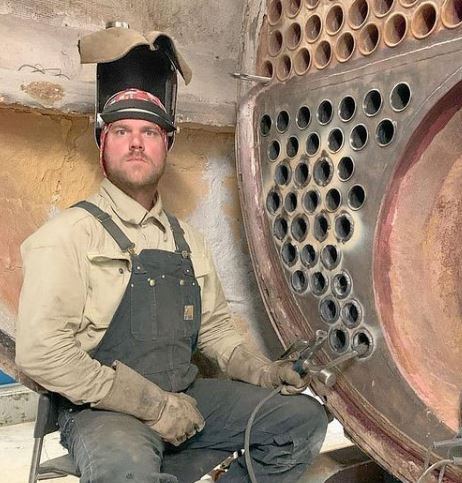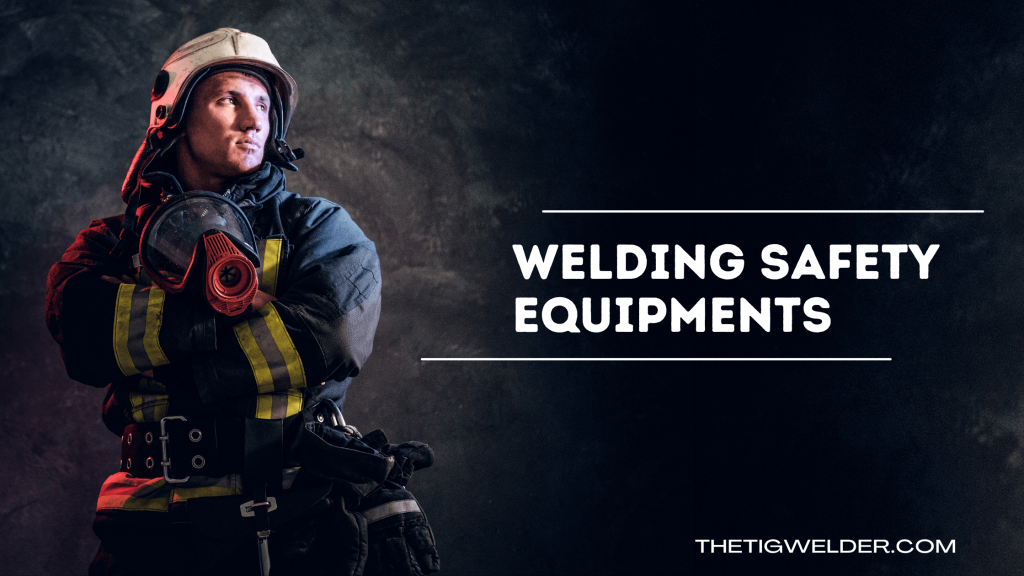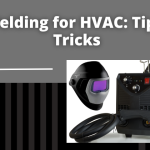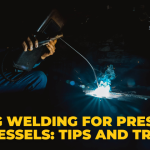Welding is using at a massive scale in the world. Welding processes are commonly used across various industries, including aerospace, automotive, manufacturing, energy, and construction, and used to join metals, thermoplastics, or wood for different applications. It is also used to create artwork by a growing community of artists, but it is also harmful.

15 Amazing Welding Safety Tips
All those undertaking this activity must use some precautions to make them safe. Some tips should follow, such as tool using awareness, using welding gloves, high-top leather shoes, 3D glasses, respirator, ventilated area, leather jacket, welding helmet, and many more.
By following these guidelines, the risk can be minimized.
1- Awareness
It is a hazardous profession with multiple factors that may endanger the health of welders. So the awareness about this activity is very vital. There is a lack of knowledge about hazards, Personal protective equipment and use the PPE among them. To make the work safe, employees should be fully trained and well aware. These safety guide help in all the are of welding like while Welding Exhaust Pipe.
2- Ventilated Area
Ventilation means the supply of fresh air in the contaminated area. It distributes the air and removes all fumes, dust, and particles. It is advisable to work in an open or ventilated place. It provides the employee’s comfort zone.
3- Avoid Repetitive Stress Injuries
The use of auto-darkening helmets relieves neck fatigue in comparison to traditional fixed shade helmets because they are lighter and don’t require the user to snap their head to lower the hood. It can also be automatically dimmed between welding processes, which saves several seconds on larger components, which quickly adds up to several minutes. It makes it easier for companies to stick to their build schedule when these minutes are kept.
4- Hazards to Avoid
Welders are facing many hazards. Some of them are exposure to gases, electric shock, health injury, ultraviolet radiations, spark, burn, intense heat, and loud voices.
5- Don’t See the Light
A welding arc’s rays can cause “arc flash” in unprotected eyes within seconds, a painful condition that may not manifest for hours afterward.
If welding or watching is carried out while wearing a welding helmet, the operator should be provided with a proper filter shade. The helmet should also be worn with safety glasses and ear protection. Protect others from the arc by installing screens or barriers.
Choose a suitable lens shade for welding applications. An OSHA guide describes how to choose the right lens according to welding criteria. Fix-shade lenses are appropriate for weld parameters and materials that do not vary.
6- Read the Manual
There is a lot of important information in a welder’s operating manual, such as safety information and procedures for maximizing its performance. To ensure that operators are familiar with the machine’s contents, it is important to train those operators. To replace a lost or damaged manual, contact the manufacturer. Many manufacturers provide online user manuals. It is not recommended to use this article in place of the manufacturer’s instructions.
7- Freely Breathe
During welding, smoke and fumes are released into the atmosphere that can be harmful to health. It is possible to accumulate toxic fumes when welding in confined spaces or to replace the oxygen in the air with shielding gases. Remove fumes from the area as much as possible and breathe clean air while working.
Wearing respirators is recommended when welding certain materials, so consult a welding engineer, an industrial safety specialist, or the datasheet for welding electrodes before welding.
8- Exposure of Gases
During welding, many invisible gases like Nitric Oxide, Nitrogen dioxide, Carbon Monoxide, Ozone, Phosgene, Hydrogen Fluoride, Carbon dioxide can easily penetrate the lungs, which may cause cancer, asthma, pneumonia, and some other diseases. Respirators can help to protect welders from exposure to harmful fumes.
The welder who faces some symptoms like Nose, eyes, and throat irritation should leave this area and get fresh air. This harm can prevent by providing ventilation areas, as good ventilation reduced the gaseous particles. Fan and exhaust fans are also used to control the exposure of fumes and gases from the welding area.
9- Electric Shock
In welding activity, electric shock is the most common hazard experienced by welders. It may happen when they touch two metal objects which have high voltage. Higher voltage may cause a higher rate of current that makes serious injury or even death. Electric shock, either direct or indirect both cause a high risk of injury.
It occurs if the welder stands near the water, on the metal floor, touches the inductor, or wearing wet clothes. Flame-resistant gloves, leather jacket, and leather safety shoes shield from the electric shock.
10- Get Rid of Clutter
Each piece of welding equipment is clearly marked and labeled by Vermeer within its welding areas. In the universe, everything has a place. All of the equipment and tools that the operator needs to perform his or her duties are contained in the welding area. Welding tables utilize a mechanism that puts the work at the proper height for the operator rather than traditional tables with fixed heights.
11- Health Injury
Wearing protective clothing is a significant part of welding. Without using PPE (personal protective equipment), the welder may lead to many injuries. It can be cuts, burns, smashed fingers, electric shock, and many others.
These may affect the skin very rapidly. To avoid all these dangers, one must use proper welding equipment. PPE must be dry and in appropriate condition.
12- Ultraviolet Radiations
Ultraviolet radiations are produced by high-temperature surfaces. Ultraviolet radiation has a low power of penetration. Hence, its direct effects on the human body are limited to the surface skin. The direct effects include reddening of the skin, aging, skin cancer.
It is important to use a welding helmet as it protects the welders from UV rays and harmful particles. A fire-resistant hood should also use; it saves the back of the head. High intense of light affect the eyes very badly. So for eye care, use a dark lens or 3D glasses.
13- Loud Voice
Exposure to intensive sound can be unpleasant and insufficient to work efficiently. A loud voice during the welding may cause ear damaging. Temporary or permanent hearing loss occurs, depending on the intensity of sound.
A welding helmet is a masterpiece of equipment for protection from hazards. For the shielding of the ear during this activity, use earplugs and a welding helmet.
14- Intense of Heat
Many other issues can arise from welding. Work in a hot environment may also have serious adverse effects. It may cause heat stroke, heat rashes, heat exhaustion, burning of the skin, breathing problem. In extreme heat, the body works extra hard to maintain a normal temperature, which can lead to death.
To protect from the high intensity of heat and sparks, wear only flame-resistant clothes. It should have no cuffs, and pockets must be covered. Do not use synthetic clothing.
15- Burn
Burn is a type of injury caused by UV rays, spark, and extreme temperature. These cause-effect the skin, eye, and some other tissues. It may happen very quickly. It is important to make the place fire-safe. It usually occurs when the operator is trying to avoid the precautions. It is advisable to prevent a burn, follow the PPE, and operators are properly clothed.
Put on the Proper Gear
It is not a good idea to wear shorts or short sleeve shirts in a welding cell. Helmets, gloves, and clothing are mandatory even when tack welding quickly.
Denim pants and tight-woven shirts are suitable flame-retardant clothing for firefighters. It is becoming more and more difficult for welding jackets to remain heavy, hot, restrictive, or cumbersome as they become lighter, thinner, and lighter. Several fire-resistant clothing options are available from safety equipment manufacturers today, all of which use flame-retardant cloth and pigskin leather for better protection and improved mobility.
Welding Gloves
Welding is typically a risky task, and wearing gloves comes in handy in protecting both the wrist and the hands. Besides protecting welders against electrical shock, these gloves provide an improved grip against resistance during welding.
Without wearing the proper PPE during the welding, there is a high risk of burns, cuts, electric shock, and crushed fingers. To avoid this risk, we must use welding gloves that are made of leather and must be heat-resistant.
High-top Leather Shoes
Doing work by stand on the metal surface is very dangerous as the risk of electric shock is very high. For foot protection, wearing leather shoes is the best option as it safeguards from electric shock, heat, falling objects, and fire sparks.
3D Glasses
Welding glasses are designed with shade number 3 or 5 lenses. It is very useful during brazing and cutting metal pieces. It shields the eyes from the high intensity of light, fire sparking, and ultraviolet radiations.
Respirator
Welding respirator is one of the important equipment. During this activity, many gases are produced and mix in the air. It causes many diseases and fatalities. It filters fumes and particles from the air and makes the welder comfortable and safe.
Leather Jacket
Leather jackets and clothing are items of personal protective equipment (PPE). Make sure a leather jacket must be wear, and the clothes are buttoned up. It repels the sparks consume during welding. It also protects from burns and electric shock.
Welding Helmet
It is an essential piece of personal equipment. It covers the welder’s head. It shields the eye, face, and neck from ultraviolet radiations, consuming fumes, burning particles, and sparks.
FAQ’s
How Should we Weld Safely?
The 10 Rules for Welding Safety
- Be sure to conduct yourself in a safe location.
- Stay away from fire hazards.
- Consider the risks.
- Check for ventilation.
- Maintain your equipment.
- Use the right personal protective equipment.
- Protect other workers.
- Avoid breathing in fumes and gases.
What are the 5 Risks Associated with Welding?
The following list is a list of some of the most common welding hazards and the measures workers can take to protect themselves from them.
- Fires and explosions.
- Radiation.
- Burn hazards.
- Fumes and gases.
- Electricity.
- Other hazards
How do Safety Precautions Work?
Taking precautions means turning on lights, wearing eye protection, wearing gloves, cleaning up spills, and having access to a first aid kit, among other things. Taking safety precautions includes isolating or earthing.
How can Welding be made Safer?
All welders should wear helmets and gloves as the most important safety equipment.
Why is Welding so Dangerous?
These 12 tips will help you improve welding safety
- Take a look at the book.
- Button Up.
- Dress appropriately.
- Wear appropriate footwear.
- Breathe Freely.
- Don’t See the Light.
- Helmets that automatically dim.
- Reducing repetitive strain injuries.
Conclusion
To conclude, it can say that welding is the most working process in the entire universe. It is used for making permanent joints. It has many advantages but also several hazards. To prevent injury to a person, extreme caution should be exercised when using any type of welding equipment.
Personal safety is necessary, not a choice for welders. Welding safety tips make the work safe and easier. It protects from potential hazards. It provides awareness. It makes the welders capable of taking steps at immediate risk.

It’s been years since I got into welding as a side hustle. It’s been so long since Doing All kinds of welds for business and pleasure as this is my hobby. Being in this field I have learned from hands-on-experience also came to know what gears work and what doesn’t. The Tig Welder is my own platform where I use to share my experience.






Leave a Reply